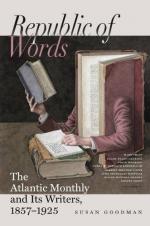There is one question respecting Species that gives rise to very earnest discussions in our day, not only among naturalists, but among all thinking people. How far are they permanent, and how far mutable? With reference to the permanence of Species, there is much to be learned from the geological phenomena that belong to our own period, and that bear witness to the invariability of types during hundreds of thousands of years at least. I hope to present a part of this evidence in a future article upon Coral Reefs, but in the mean time I cannot leave this subject without touching upon a point of which great use has been made in recent discussions. I refer to the variability of Species as shown in domestication.
The domesticated animals with their numerous breeds are constantly adduced as evidence of the changes which animals may undergo, and as furnishing hints respecting the way in which the diversity now observed among animals has already been produced. It is my conviction that such inferences are in no way sustained by the facts of the case, and that, however striking the differences may be between the breeds of our domesticated animals, as compared with the wild Species of the same Genus, they are of a peculiar character entirely distinct from those that prevail among the latter, and are altogether incident to the circumstances under which they occur. By this I do not mean the natural action of physical conditions, but the more or less intelligent direction of the circumstances under which they live. The inference drawn from the varieties introduced among animals in a state of domestication, with reference to the origin of Species, is usually this: that what the farmer does on a small scale Nature may do on a large one. It is true that man has been able to produce certain changes in the animals under his care, and that these changes have resulted in a variety of breeds. But in doing this, he has, in my estimation, in no way altered the character of the Species, but has only developed




